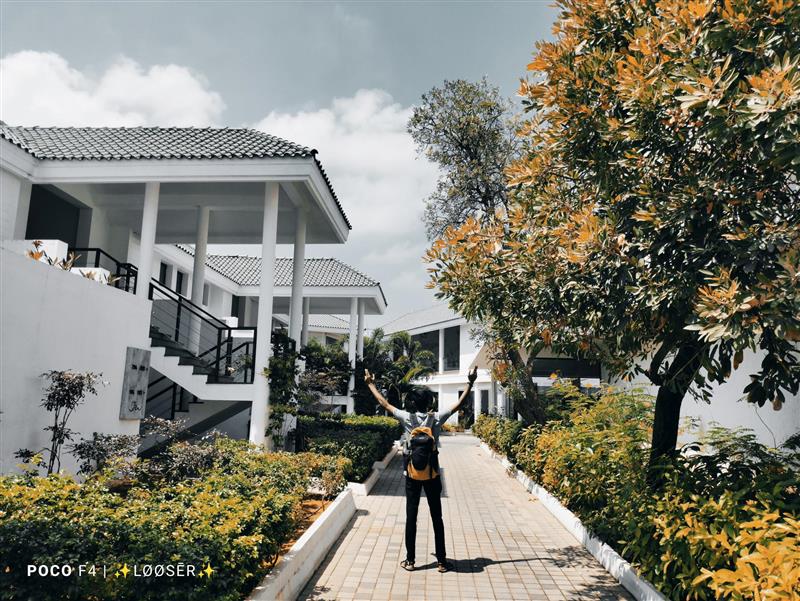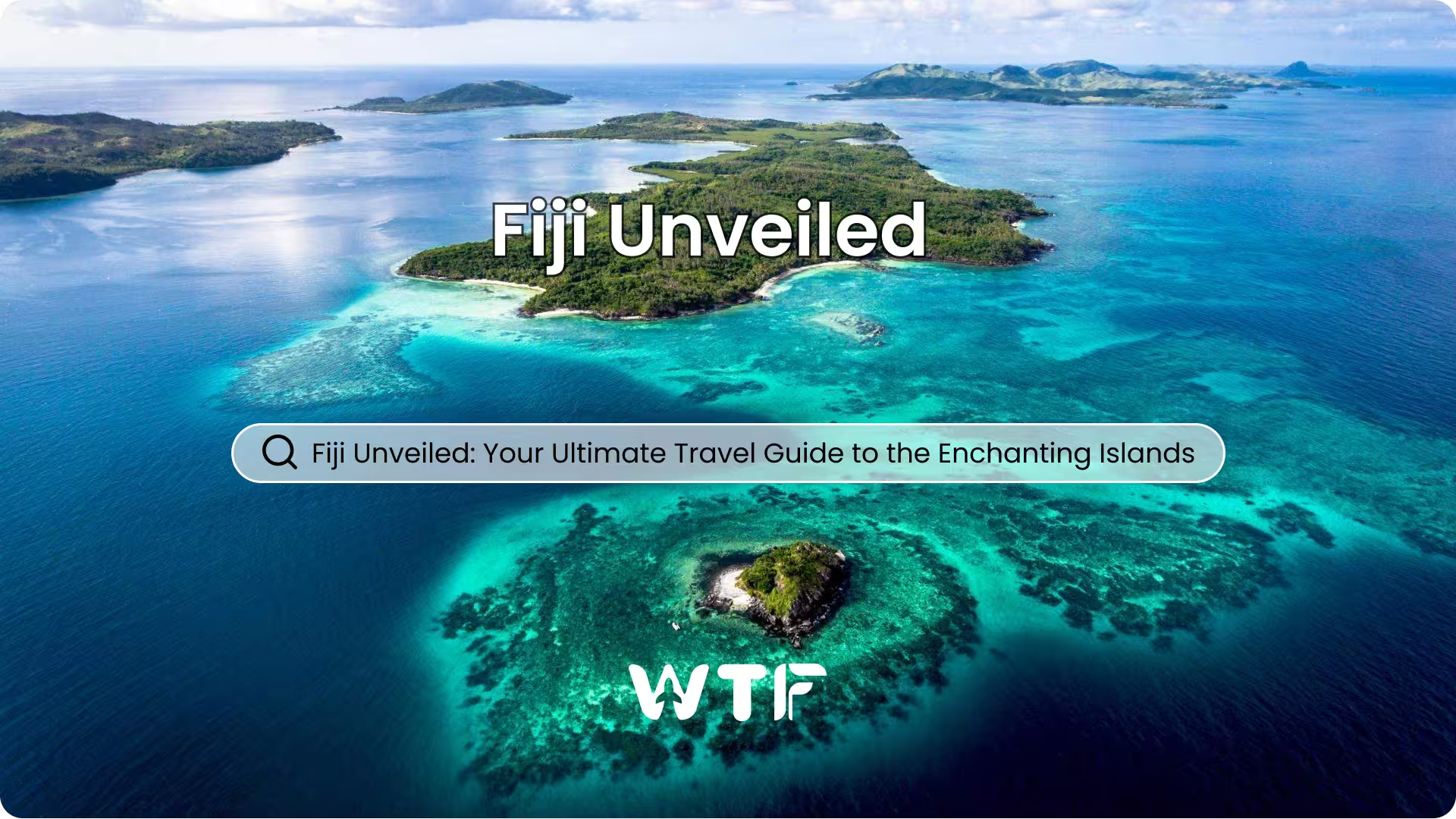Welcome to “Fiji Unveiled,” your go-to resource for planning an unforgettable tropical escape. In this comprehensive guide, we’ll delve into the captivating beauty of Fiji, exploring its diverse culture, breathtaking landscapes, and unique attractions. Whether you’re a beach enthusiast, an adventure seeker, or a cultural explorer, Fiji offers something for everyone. Nestled in the South Pacific, the Fiji Islands beckon with promises of turquoise waters, sandy beaches, and cultural richness. In this comprehensive guide, we’ll navigate through the hidden gems and must-see attractions, ensuring your Fiji adventure is nothing short of extraordinary.
Geographical and Historical Details:
1. Geographical Information:
Geographical Diversity:
The Fiji Islands, a mesmerizing archipelago nestled in the South Pacific Ocean, stretch across approximately 18,000 square kilometers. Comprising over 300 islands, each with its own distinct character, Fiji offers an unparalleled diversity of landscapes. From the volcanic mountain ranges of Viti Levu to the coral-fringed islets of the Mamanuca group, the geographical tapestry of Fiji is a spectacle to behold.
Mountains and Volcanoes:
Viti Levu, the largest island, is adorned with verdant rainforests and towering peaks, including Mount Tomanivi, Fiji’s highest point. The rugged interior reveals ancient volcanic landscapes, while coastal plains host vibrant communities and lush agricultural expanses.
Coastlines and Coral Reefs:
The coastal fringes of Fiji showcase some of the world’s most pristine beaches. Coral reefs encircle many islands, offering spectacular snorkeling and diving opportunities. The Great Astrolabe Reef, one of the largest barrier reefs globally, adds a rich marine dimension to Fiji’s geography.
Island Groups:
Explore the distinct island groups, such as the Yasawa Islands, known for their dramatic landscapes and secluded coves, or the Lau Archipelago, where traditional Fijian customs thrive in remote villages. Each island contributes to the mosaic of Fiji’s geography, providing a diverse range of experiences for every traveler.
2. Historical Information:
Indigenous Fijian Heritage:
The roots of Fijian history delve deep into the traditions of its indigenous people. With a heritage spanning thousands of years, Fijian culture is deeply rooted in communal living, oral traditions, and a profound connection to the land. The Fijian way of life is characterized by respect for elders, vibrant ceremonies, and the passing down of cultural practices from generation to generation.
Colonial Influence:
European explorers and traders arrived in Fiji in the 17th century, bringing a wave of cultural exchange and, at times, conflict. The islands experienced a period of colonial rule under the British, impacting Fijian society and introducing elements that remain present in modern Fiji.
Modern Independence:
Fiji gained independence from British colonial rule in 1970, marking a significant chapter in its history. The nation has since embraced a multicultural identity, with influences from Indian, Chinese, and European communities contributing to the vibrant tapestry of Fijian society.
Cultural Preservation:
Despite external influences, Fijians have admirably preserved their cultural identity. Traditional ceremonies like the Kava ritual and the Meke dance continue to be central to Fijian celebrations, offering visitors a glimpse into the rich historical tapestry that defines the islands.
Exploring the Must-Visit Tourist Destinations in Fiji Islands
1. Denarau Island
Denarau Island is a luxurious haven, known for its upscale resorts, golf courses, and pristine beaches. The island seamlessly blends modern amenities with Fijian hospitality. The 18-hole championship golf courses and the exclusive Port Denarau Marina make it a favorite destination for travelers seeking relaxation and indulgence.
How to Get There Using Public Transport from Mainland:
From the main island of Viti Levu, you can take a public bus or a taxi to reach Denarau Island. The journey typically takes around 20-30 minutes, depending on the traffic.
Type of Transportation Available and Their Cost:
Upon reaching Viti Levu, you can access Denarau Island by taxi, with fares ranging from FJD 20 to FJD 30. Alternatively, public buses are a more budget-friendly option, costing around FJD 5 to FJD 10. Taxis and buses are readily available at key transportation hubs.
Must-Do Activities Around Denarau Island:
- Water Sports: Engage in various water activities, from snorkeling and kayaking to jet-skiing, offered by the island’s resorts.
- Port Denarau Marina: Explore the vibrant marina, lined with shops, restaurants, and even excursion operators for day trips to nearby islands.
- Golfing: Tee off at the championship golf courses, enjoying lush surroundings and breathtaking views.
Entrance Fee:
Denarau Island itself does not have a specific entrance fee. However, activities and facilities within resorts may have individual charges.
2. Yasawa Islands
The Yasawa Islands are a chain of 20 volcanic islands known for their stunning landscapes, turquoise waters, and vibrant coral reefs. These islands offer a more secluded and authentic Fijian experience, with traditional villages and beautiful, untouched nature.
How to Get There Using Public Transport from Mainland:
To reach the Yasawa Islands, take a Yasawa Flyer, a high-speed catamaran, from Port Denarau. The journey takes around 2-4 hours, depending on your chosen island destination.
Type of Transportation Available and Their Cost:
The Yasawa Flyer offers various ticket options, ranging from FJD 80 to FJD 220, depending on your chosen class and destination. The catamaran operates on a regular schedule, providing flexibility for travelers.
Must-Do Activities Around Yasawa Islands:
- Sawa-i-Lau Caves: Explore the mystical limestone caves with crystal-clear waters, a sacred site for the Fijian people.
- Snorkeling and Diving: Immerse yourself in the vibrant underwater world, with opportunities to swim alongside manta rays and reef sharks.
- Cultural Visits: Engage with local villagers, participating in traditional ceremonies and experiencing authentic Fijian hospitality.
Entrance Fee:
The Yasawa Islands do not have a specific entrance fee, but some activities or guided tours may have associated costs.
3. Sigatoka Sand Dunes National Park
The Sigatoka Sand Dunes National Park is a natural wonder on the Coral Coast of Viti Levu. This unique landscape features rolling sand dunes, remnants of a volcanic activity thousands of years ago. The park is not only an archaeological site with ancient Lapita pottery finds but also a sanctuary for various plant and bird species.
How to Get There Using Public Transport from Mainland:
From Nadi or Suva, you can take a public bus or hire a taxi to Sigatoka Town. From there, local buses or taxis are available to take you to the entrance of the National Park. The journey takes approximately 1.5 to 2 hours.
Type of Transportation Available and Their Cost:
Public buses may cost around FJD 5 to FJD 15, while taxi fares could range from FJD 70 to FJD 120, depending on your starting point. Once in Sigatoka Town, additional transportation options are available.
Must-Do Activities Around Sigatoka Sand Dunes National Park:
- Guided Tours: Explore the dunes with knowledgeable guides who share insights into the park’s history, flora, and fauna.
- Bird Watching: Observe the diverse bird species that inhabit the area, including the colorful orange dove and the collared lory.
- Scenic Walks: Take leisurely walks through the dunes and enjoy panoramic views of the coastline and Pacific Ocean.
Entrance Fee:
Entrance fees to Sigatoka Sand Dunes National Park may vary but generally range from FJD 10 to FJD 20 per person.
4. Taveuni Island – The Garden Island
Known as the “Garden Island,” Taveuni is the third-largest island in Fiji, celebrated for its lush rainforests, waterfalls, and vibrant marine life. It offers a perfect blend of nature and adventure, with opportunities for hiking, diving, and exploring the diverse ecosystems.
How to Get There Using Public Transport from Mainland:
To reach Taveuni, you can take a flight from Nadi International Airport or Suva’s Nausori Airport. Alternatively, ferries from Viti Levu are available, and buses or taxis can transport you to the ferry terminals.
Type of Transportation Available and Their Cost:
Flights to Taveuni can range from FJD 150 to FJD 300, depending on the airline and time of booking. Ferry prices vary but may range from FJD 30 to FJD 80, and taxis from major towns to ferry terminals may cost around FJD 20 to FJD 50.
Must-Do Activities Around Taveuni Island:
- Bouma National Heritage Park: Explore the lush rainforests, waterfalls, and coastal areas within this protected park.
- Rainbow Reef Diving: Dive into the world-famous Rainbow Reef, known for its colorful coral formations and diverse marine life.
- Lavena Coastal Walk: Take a scenic walk along the coastline, passing through villages, beaches, and tropical forests.
Entrance Fee:
Entrance fees to specific attractions on Taveuni, such as Bouma National Heritage Park, may range from FJD 15 to FJD 25 per person.
5. Kula Eco Park – Home to Fiji’s Native Wildlife
Nestled on Fiji’s Coral Coast, the Kula Eco Park is a conservation haven dedicated to preserving and showcasing the country’s native flora and fauna. This family-friendly park is an educational experience, allowing visitors to interact with and learn about Fiji’s unique biodiversity.
How to Get There Using Public Transport from Mainland:
From Nadi or Suva, take a public bus heading to Sigatoka Town. Once in Sigatoka, you can hire a taxi or take a local bus to reach the Kula Eco Park, situated on the Queen’s Highway. The journey takes approximately 1.5 to 2 hours from either city.
Type of Transportation Available and Their Cost:
Public bus fares from Nadi or Suva to Sigatoka may range from FJD 5 to FJD 15. Taxi fares from Sigatoka to the Kula Eco Park can vary but may be around FJD 20 to FJD 40. The park is easily accessible by private vehicle as well.
Must-Do Activities Around Kula Eco Park:
- Wildlife Encounters: Witness Fijian wildlife up close, including parrots, iguanas, and the unique Fijian crested iguana.
- Guided Tours: Join guided tours to learn about the park’s conservation efforts and the importance of protecting Fiji’s natural heritage.
- Nature Walks: Stroll through lush botanical gardens, discovering native plant species and enjoying the serene surroundings.
Entrance Fee:
Entrance fees to Kula Eco Park are approximately FJD 30 for adults and FJD 15 for children (4-12 years old). The fees contribute to the park’s conservation initiatives.
Exploring Lakshadweep’s Hidden Treasures: 5 Unexplored Gems
1. Naihehe Caves – Sigatoka, Viti Levu
The Naihehe Caves, hidden amidst the Sigatoka Valley, offer an enchanting underground adventure. These limestone caves are adorned with stalactites and stalagmites, providing a glimpse into Fiji’s ancient past. The caves served as a fortress for the Fijian people during tribal conflicts and have unique historical and cultural significance.
How to Get There from Nearby Possible Boarding Country:
Travelers can fly into Nadi International Airport from nearby countries like Australia or New Zealand. From Nadi, take a scenic drive or a local bus to Sigatoka. Once in Sigatoka, local guides can lead you to the caves, often accessed via a short hike.
Type of Local Transportation Available and Their Cost:
Local buses are an economical option, with fares ranging from FJD 5 to FJD 15, depending on the distance. Taxis from Nadi to Sigatoka may cost around FJD 70 to FJD 120. Local guides at Sigatoka can arrange transportation to the caves for an additional fee, usually around FJD 20 to FJD 30.
Must-Do Activities Around Naihehe Caves:
- Cave Exploration: Venture deep into the caverns, guided by local experts who share captivating stories and insights.
- Cultural Narratives: Learn about the historical significance of the caves and the role they played in Fijian history.
- Photography: Capture the stunning formations and eerie beauty of the caves with your camera.
Entrance Fee:
Entrance fees to Naihehe Caves may vary but are generally around FJD 40 to FJD 60 per person, inclusive of guided tours.
2. Savusavu Hot Springs – Savusavu, Vanua Levu
The Savusavu Hot Springs, nestled in the town of Savusavu on Vanua Levu, are a natural wonder with therapeutic benefits. Locals have long known the rejuvenating properties of these geothermal springs, and visitors can immerse themselves in warm, mineral-rich waters surrounded by lush tropical landscapes.
How to Get There from Nearby Possible Boarding Country:
Travelers can fly into Nausori Airport in Suva, Fiji, from countries like New Zealand or Australia. From Suva, take a domestic flight to Savusavu Airport on Vanua Levu. The hot springs are easily accessible from Savusavu town.
Type of Local Transportation Available and Their Cost:
Local buses or taxis can take you from Savusavu Airport to the town center for approximately FJD 10 to FJD 20. While the hot springs may be within walking distance, taxis are readily available for further exploration, with fares ranging from FJD 10 to FJD 30.
Must-Do Activities Around Savusavu Hot Springs:
- Relaxation: Indulge in the therapeutic warmth of the hot springs, surrounded by tropical vegetation.
- Local Market Visit: Explore the vibrant Savusavu Market for a taste of local produce, crafts, and traditional Fijian goods.
Entrance Fee:
There is often no formal entrance fee for the hot springs, but visitors are encouraged to contribute to the local community or hire guides for additional insights.
3. Waitavala Natural Water Slide – Taveuni, Northern Division
Nestled in the lush rainforest of Taveuni, the Waitavala Natural Water Slide is a hidden thrill awaiting the adventurous. Smoothed by centuries of water flow, a natural rock formation creates a thrilling waterslide experience. Surrounded by vibrant greenery, it’s a local secret for a refreshing and exhilarating day out.
How to Get There from Nearby Possible Boarding Country:
Fly into Nausori Airport in Suva from countries like Australia or New Zealand. From Suva, take a domestic flight to Taveuni Airport. Local guides or taxis can then take you to the entrance of the Waitavala Natural Water Slide.
Type of Local Transportation Available and Their Cost:
Local buses or taxis are available on Taveuni for transportation, with fares varying based on the distance. Taxis may cost around FJD 20 to FJD 50, and guides can provide additional transportation services at negotiated rates.
Must-Do Activities Around Waitavala Natural Water Slide:
- Watersliding Adventure: Experience the thrill of sliding down the natural rock slide, surrounded by pristine rainforest.
- Hiking: Explore the lush surroundings with guided hikes to discover hidden waterfalls and the diverse flora and fauna of Taveuni.
Entrance Fee:
While there may not be an official entrance fee, it is common to engage local guides who may request a fee for their assistance and to ensure a safe and enjoyable experience.
4. Koroyanitu National Heritage Park – Ba, Viti Levu
Koroyanitu National Heritage Park, located in the scenic highlands of Ba, Viti Levu, is a well-kept secret among locals. This park is a sanctuary of biodiversity, featuring dense forests, historical sites, and stunning viewpoints. It offers a tranquil escape with walking trails leading to hidden waterfalls and traditional Fijian villages.
How to Get There from Nearby Possible Boarding Country:
Travel to Nadi International Airport from nearby countries and take a local bus or taxi to reach Ba. From Ba, buses or taxis can transport you to the entrance of Koroyanitu National Heritage Park.
Type of Local Transportation Available and Their Cost:
Local buses are a cost-effective option, with fares from Nadi to Ba ranging from FJD 5 to FJD 15. Taxis may cost around FJD 40 to FJD 80, and once in Ba, additional transport options to the park can be arranged.
Must-Do Activities Around Koroyanitu National Heritage Park:
- Village Visits: Interact with the local communities within the park, experiencing traditional Fijian hospitality.
- Hiking Trails: Embark on scenic hikes leading to waterfalls like Tova Peak and viewpoints offering panoramic vistas.
- Bird Watching: Explore the diverse birdlife, including the endemic Fiji Silktail and Orange Dove.
Entrance Fee:
Entrance fees to Koroyanitu National Heritage Park are approximately FJD 20 for adults and FJD 10 for children, contributing to conservation efforts and maintaining the park’s pristine environment.
How to get there?
1. Flight Details – Cheapest Flights and Rates
- Cheapest Flights:
- Look for budget airlines and compare prices on popular travel websites.
- Keep an eye on seasonal promotions and sales for discounted fares.
- Consider flexible travel dates for better deals.
- Rates:
- International flights to Fiji can vary based on the departure location, time of booking, and airline. On average, expect prices to range from $800 to $1500 for a round-trip ticket.
- Booking Tips:
- Book in advance to secure lower fares.
- Consider nearby airports for potential cost savings.
- Subscribe to airline newsletters for exclusive deals and promotions.
2. Cruise, Local Boats – Price
- Cruise Options:
- Explore cruise packages that include stops at various Fijian islands.
- Check for all-inclusive deals that cover accommodation, meals, and onboard activities.
- Local Boat Tours:
- Opt for local boat operators for a more authentic experience.
- Prices for day tours or island-hopping excursions can range from $50 to $150 per person.
- Booking Tips:
- Research and compare cruise itineraries to find the best fit for your preferences.
- Inquire about any additional fees not included in the initial price.
- Book boat tours through reputable local operators for a genuine Fijian adventure.
3. Local Transportations Inside Fiji Islands
- Public Buses:
- Public buses are an economical option for traveling between towns and cities. Fares range from FJD 2 to FJD 10.
- Taxis:
- Taxis are readily available, and fares vary based on distance. Expect to pay around FJD 20 to FJD 50 for short to medium distances.
- Rental Cars:
- Renting a car allows flexibility. Prices start from FJD 100 per day, depending on the vehicle type and rental duration.
- Water Taxis:
- In coastal areas, water taxis provide a unique way to explore nearby islands. Prices vary, so negotiate beforehand.
- Tips for Using Local Transport:
- Negotiate taxi fares before starting the journey.
- Be mindful of bus schedules, as they may not run as frequently in remote areas.
- Embrace the Fijian “Bula” spirit – locals are usually happy to provide guidance on transportation.
4. Transportation Tips
- Travel Insurance:
- Ensure you have comprehensive travel insurance covering potential transportation disruptions.
- Local Currency:
- Have Fijian dollars for local transactions, especially when using taxis or public transport.
- Book in Advance:
- For flights, cruises, and popular activities, booking in advance can save both money and time.
- Cultural Sensitivity:
- Respect local customs and be mindful of cultural nuances when using transportation services.
- Weather Considerations:
- Keep an eye on weather conditions, especially during the cyclone season, as it may affect transportation services.
Exploring Fiji Islands on a Budget: A Comprehensive Guide to Affordable Travel
1. VISA Process and Restrictions
- VISA Process:
- For most visitors, Fiji offers a visa-free entry for up to 4 months. Ensure your passport is valid for at least six months beyond your intended stay.
- Check the official website or contact the nearest Fijian embassy for the most up-to-date visa requirements.
- Restrictions:
- Visitors are not allowed to engage in employment or any business activities without the appropriate work permit.
- Respect local customs and traditions, as certain behaviors may be offensive.
2. Things We Shouldn’t Do When We Go There
- Respect Local Traditions:
- Avoid wearing hats or sunglasses in villages as a sign of respect.
- Do not touch someone’s head, as it is considered sacred.
- Environmental Conservation:
- Do not litter, and avoid disturbing coral reefs and marine life during water activities.
- Observe designated areas and trails to minimize ecological impact.
- Cultural Sensitivity:
- Avoid pointing your feet at people or religious objects.
- Seek permission before taking photos of locals, especially in villages.
3. Currency and Tips to Save Money
- Currency:
- Fijian Dollar (FJD) is the official currency. Exchange rates can vary, so check for the best rates before converting money.
- Money-Saving Tips:
- Use local transportation options like buses or shared taxis.
- Eat at local markets and street stalls for affordable and authentic meals.
- Consider booking activities in advance for potential discounts.
4. Budget Accommodations and Locations to Stay On Budget
- Budget Accommodations:
- Hostels like Bamboo Backpackers and Horizon Backpackers offer affordable stays.
- Look for budget-friendly guesthouses or lodges in less touristy areas.
- Locations to Stay On Budget:
- Nadi and Suva have a range of budget accommodations.
- Explore areas like Lautoka or Rakiraki for more economical options.
5. Public Transport and Its Price
- Public Transport:
- Public buses are a cost-effective way to travel between towns and cities.
- Prices range from FJD 2 to FJD 10, depending on the distance.
- Tips for Using Public Transport:
- Be mindful of bus schedules, especially in remote areas.
- Buses may not run as frequently during weekends and public holidays.
6. Local SIM Provider and Best Plan for Tourists
- Local SIM Provider:
- Purchase a SIM card from Vodafone Fiji or Digicel Fiji upon arrival at the airport or in major towns.
- Best Plan for Tourists:
- Opt for prepaid data plans with sufficient data for navigation and communication.
- Check coverage areas, especially if you plan to explore remote locations.
7. Basic Words in Local Language
- Basic Words:
- Bula – Hello/welcome
- Vinaka – Thank you
- Moce – Goodbye
- Useful Phrases:
- “Yadra” (Good morning)
- “Vanuinui vinaka” (Good afternoon)
- “Vakacegu ena nomu siga” (Have a good day)
8. Local Cuisine and Must-Try Foods: and Its Cost
- Must-Try Foods:
- Lovo: Traditional feast cooked in an earth oven.
- Kokoda: Fijian ceviche with raw fish marinated in coconut milk and lime.
- Palusami: Taro leaves filled with coconut cream and onions, wrapped in foil and baked.
- Cost:
- Street food and local markets offer budget-friendly options, with meals starting from FJD 5 to FJD 15.
- Dining in restaurants may cost between FJD 20 to FJD 50 per person.
Wanderer’s Word
In conclusion, Fiji beckons with its captivating blend of pristine landscapes and vibrant cultural experiences. As you plan your visit, keep in mind the visa requirements, cultural sensitivities, and budget-friendly tips to make the most of your journey. From the budget accommodations in Nadi to the hidden wonders like the Naihehe Caves, Fiji offers a unique adventure for every traveler. Save money by using public transport, stay connected with a local SIM card, and savor the delicious Fijian cuisine. Your journey to Fiji is not just a vacation; it’s an opportunity to create lasting memories amidst the warmth of the South Pacific. Let the islands of Fiji become the backdrop to your extraordinary travel tale, filled with “bula” moments and the magic of this tropical paradise.
"Vaka va’ ka vaka tiko, vakavanua - The canoe of the land is the community."




